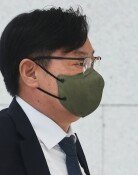Chinese bombers violated Korean ADIZ
Chinese bombers violated Korean ADIZ
Posted January. 11, 2017 08:46,
Updated January. 12, 2017 07:20
For four to five hours on Monday, more than 10 Chinese military aircraft including bombers breached the Korean air defense identification zone (ADIZ) near Ieo Island south of Jeju Island, it has been revealed belatedly. The Korean Air Force also staged sorties of more than 10 fighter jets in a show of an unusual mass violation and response. It is worrisome that China mobilized six of its high-tech bombers (H-6) to display a military protest, with its aircraft armed with missiles that covers the site of Korea’s Terminal High Altitude Area Defense (THAAD) system deployment in Seongju, North Gyeongsang Province, within the target range.
“This kind of incident does not happen often. We are cautiously making further analysis,” the Korean military said. The military seems to be judging that China’s flight was not meant as threat targeting Korea, but a military warning against the U.S. with which Beijing is in territorial dispute over the South China Sea and the East China Sea. However, Seoul cannot afford to downplay the operation. Two Chinese military planes already violated the KADIZ in January last year, and three more also violated the zone in August, and the Korean military reportedly sent immediate warning communications every time. The fact China made the same type of provocation three times indicates that Beijing is considering Korea an easy target. It is also problematic that the Korean people only learn about the Monday incident through Japanese news reports one day later.
It is truly a grave matter if China revealed its intention to sway the Korea-U.S.-Japan military cooperation mechanism by demonstrating its military might toward Korea and Japan at once, with which Beijing is in conflict over the planned THAAD deployment and territorial dispute over the Senkaku Islands. There is a chance that waters around Ieo Island will turn into a site of fierce military race between Korea and China, and among the U.S., Japan and China going forward. Seoul needs strategic response to such situation.
Since the election of Donald Trump as U.S. president, China has been openly flexing its military muscle in Northeast Asia. China passed its warships through the Tsugaru Strait between Honshu and Hokkaido Islands, Japan on Thursday last week, after seizing the U.S. Navy’s undersea drone late last year, and having the fleet of its first aircraft carrier Liaoning train for the first time at waters off Qingdao, some 400 to 500 kilometers from the Korean port city of Pyeongtaek. Beijing is also taking steps to deploy up to 500 units of its latest surface-to-air missiles on an artificial island in the South China Sea. The U.S. is also set to send its aircraft carrier as well. The Korean Peninsula will inevitably enter tumultuous waves due to a looming power game between the U.S. and China.
Despite this situation, Korea reportedly expressed objection last month to a three-nation anti-submarine drill, which had been proposed by the U.S. and Japan, due to its concern over negative public sentiment here. The offer was made to help Korea prepare for marine terrorism or guerrilla attack, and a strike with a submarine-launched ballistic missile given the Korean military’s poor capability to detect North Korean submarines, but Seoul reportedly rejected the offer, saying such a drill was premature. If Acting President Hwang Kyo-ahn chose to reject the offer for a joint military drill by considering negative public sentiment, he should not have said ‘national security is the top priority’ in the first place.
Headline News
- Med professors announce intention to leave hospitals starting Thursday
- Bridge honoring Sgt. Moon Jae-sik unveiled in Pennsylvania
- Chief of Staff Chung tells presidential secretaries to stay away from politics
- US FTC bans noncompete agreements
- N. Korea launches cyberattacks on S. Korea's defense companies







